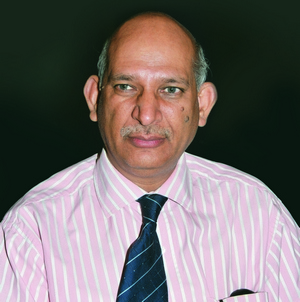R.C. Lodha, ED, Central Bank of India, outlines the credit growth projection of his bank and the likely banking industry scenario post implementation of the 7th Pay Commission:

R.C.Lodha is confident that the moderate/low inflation would enable positive interest rate return on their savings
The union cabinet had in July 2016 approved most of the recommendations of the 7th Central Pay Commission, including a 16% hike in pay and 24% increase in pensions, to be effective from January 2016. The recommended 63.5% hike in allowances, including a 138% increase in HRA, has been deferred. The increase in payouts is expected to provide an immediate boost to private urban discretionary consumption. Apart from consumption, overall savings in the economy would also get a fillip. The government has already notified the 2.57-time hike in basic salary of 10 million government employees and pensioners. The minimum pay in central government services will be Rs18,000 per month with effect from 1 January 2016, up from the existing Rs7000 per month. At the highest level, the salary would go up from Rs90,000 a month to Rs2.5 lakh.
The Reserve Bank of India has projected a direct impact of these recommendations on headline inflation to be around 150 basis points, while the indirect effects are estimated to be around 40 basis points. While the impact of the award is likely to be seen over a period of 2 years, as was the experience in the case of the 6th Central Pay Commission, RBI forecasts the increase in the housing index to be ‘more quick and continuous’ and the indirect effects to be ‘smaller’.
Mehul Dani: How will the ‘7th Pay Commission’ recommendations benefit banks and financial institutions in India?
R.C. Lodha: The implementation of 7th Pay Commission recommendations is going to benefit around 47 lakh central government employees (including defence and railways) and 52 lakh pensioners. It will provide payout of Rs1 lakh crore approximately, which will increase the disposable income in the hands of employees, leading to spending on automobiles, consumer products, housing, etc. We expect the increase in our retail credit by Rs3500-4000 cr. As regards inflation, it may go up by 1% and growth will touch 8%.
Which are the major industries/segments that are likely to generate direct and indirect loan demand as a result of the implementation?
Customers having high disposable income tend to spend more on things to fulfill their needs and upgrade the status. There will be increase in the demand of premium products. The major industries likely to benefit from this is automobile (Maruti Suzuki, Hero Honda, Bajaj etc) and consumer goods (Godrej, Whirlpool and LG). Similarly, demand for housing too is likely to go up. The ancillary sectors pertaining to these industries are also likely to see good growth. Our focus is on retail credit like housing, consumer goods and related manufacturers.
What could be the estimated increase in household savings and the subsequent deposit mobilization in your bank?
The average Indian household’s tendency is to funnel its savings into physical assets – gold and real estate. Physical assets accounted for more than two thirds of household savings in 2012-13, up from 48% five years prior to that. The trend is changing as households return to financial savings. As long as financial assets continue to hold the promise of higher yields, savers would move away from physical assets. The financial assets of the household sector during 2014-15 in bank deposits are Rs5792 billion out of total financial assets of Rs12,356 billion. The total amount of financial savings made by households was Rs8194 billion in 2014, which is an increase of 18% compared to financial savings of 2013. The moderate/low inflation would enable the households to earn positive interest rate return on their savings, thereby, enabling them to invest in bank deposits. The household savings is expected to be around 5-7% up. We expect that around Rs30,000 crore is likely to be parked in banks, of which, Central Bank of India expects to mobilize around Rs2000 crore during this year out of implementation of 7th Pay Commission.







